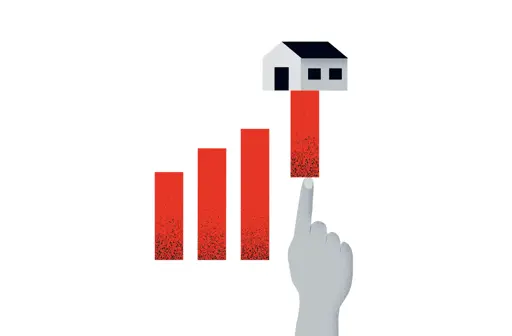Deconstructing Housing: The market alone can’t fix America’s housing crisis. A public option can.
Deconstructing Housing: The market alone can’t fix America’s housing crisis. A public option can.

Deconstructing Housing

A big problem with homeownership is that we ask it to do the impossible: We want it to remain affordable to young families while at the same time serving as a magical tool for accumulating personal wealth. But a house can’t build wealth while remaining affordable. The math is the math. The less affordable my house becomes, the more housing wealth I build. In fact, purchasing a home is never really a great investment unless your home grows less affordable in relative terms.
The truth is, homebuying is often more expensive than renting, and for most homeowners in most places over most periods of time, it’s not even that great an investment. The media tend to obsess on “hot” real-estate markets, but in vast swathes of the country, home prices are close to flat. Rather, it is housing stability, not affordability or wealth-building, that has been homeownership’s most valuable and reliable benefit.
The primary goal of the public option is to deliver stable housing to renters, too.
It is stable housing that enables us to lay down roots in the community and to build the relationships with our neighbors that we all rely on to get through even the most routine of times. It is stable housing that empowers our children to fully participate in their schools without living in constant fear of being uprooted from their friends, teachers, and classrooms. It is stable housing that is a prerequisite for the “continuity of community both for old residents and for newcomers” that the pioneering urbanist Jane Jacobs explained is so crucial to maintaining the vitality and diversity of neighborhoods. It is stable housing that provides the peace of mind necessary to go back to school or to start a business or to embark on the 22-year adventure into policy wonkery that led to the writing of this sentence.
Without housing stability, a house can never truly be a home. And for most homebuyers, this stability is provided not through homeownership itself, but through a 30-year fixed-rate mortgage. How can we possibly provide comparable stability to renters? Well, if you think about it, a fixed-rate mortgage is really just a form of rent control.
Because housing is expensive, it is rarely purchased or built without financing; and because interest is a form of rent, that makes us all renters. Whether we are paying a mortgage or paying a lease, we are all essentially renting money—either directly from a bank in the case of mortgage borrowers, or indirectly through a landlord in the case of renters. But an important difference between renting and owning is that few residential rental leases guarantee a stable rent for more than a year, whereas a 30-year fixed-rate mortgage locks in your “rent” month after month for three decades. It was in fact the rent control inherent in my 30-year fixed-rate mortgage that ultimately kept my daughter and me in our house.
The public option would function as a form of rent control too, but unlike that imposed by some cities on the private market, it would both stabilize rent and massively add to supply. It would achieve this by tapping into a vast and underutilized store of capital: the voluminous borrowing capacity that many municipalities enjoy. By collateralizing interest-only bonds against future rents, the public option serves as a conduit for renters to collectively borrow cheap money at fixed rates for long terms with no taxpayer subsidy.